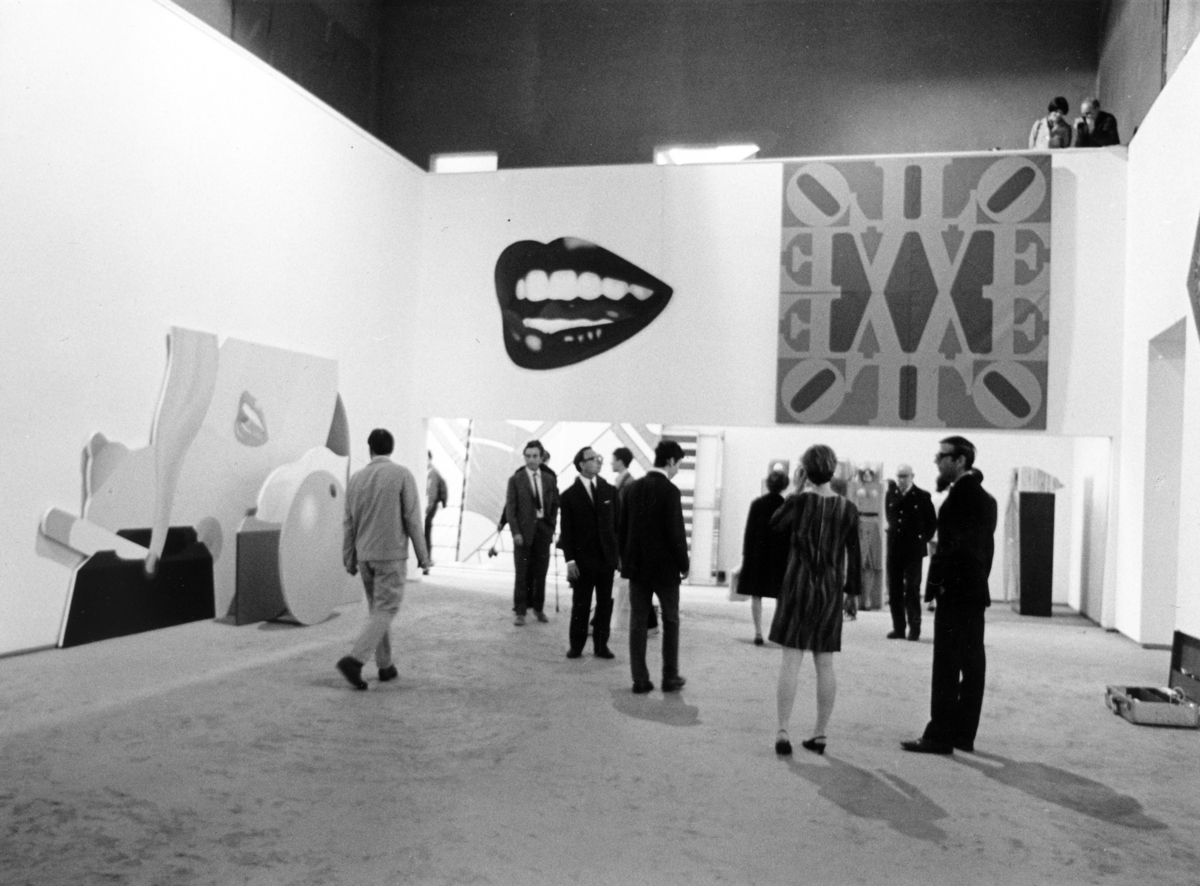Abstract
During National Socialism, Germany was cut off from developments in the international art world. To reestablish that connection in the postwar Federal Republic, Arnold Bode, a professor at the art academy in Kassel, organized the first documenta exhibition, which opened in that city in 1955. The documenta exhibition subsequently developed into the most important exhibition of contemporary avant-garde art in Germany (and arguably the entire world); it is now held every five years and still takes place in Kassel.
The documenta IV exhibition, the first ever to turn a profit, drew large crowds. It featured a selection of Pop Art, Minimal Art, and Kinetic Art that intrigued visitors and roused critics, some of whom spoke of a “modern house of horrors.” The gallery shown below features Pop Art by the Americans Robert Indiana and Tom Wesselmann. Indiana’s The Great Love (1966) hangs on the right side of the rear wall; Wesselmann’s Mouth No. 15 (1968) hangs to the left. Wesselmann’s Great American Nude No. 98 (1967), five canvasses arranged behind one another in three planes, is positioned against the gallery’s left wall. Two of these three works, The Great Love and Great American Nude No. 98 are in German collections today. Photo by Abisag Tüllmann.
